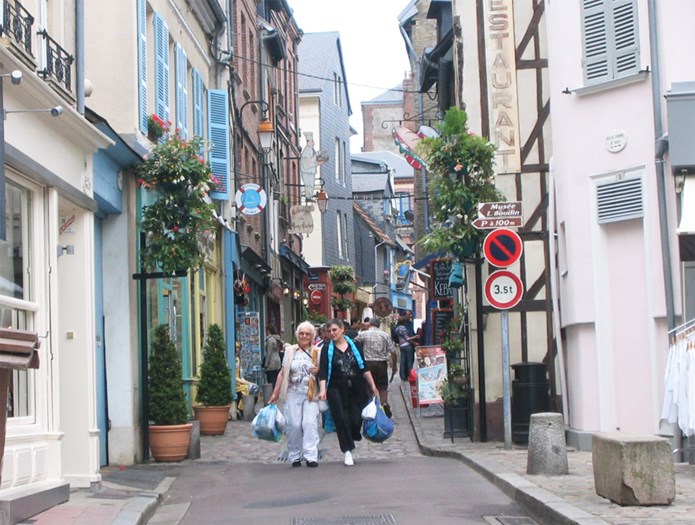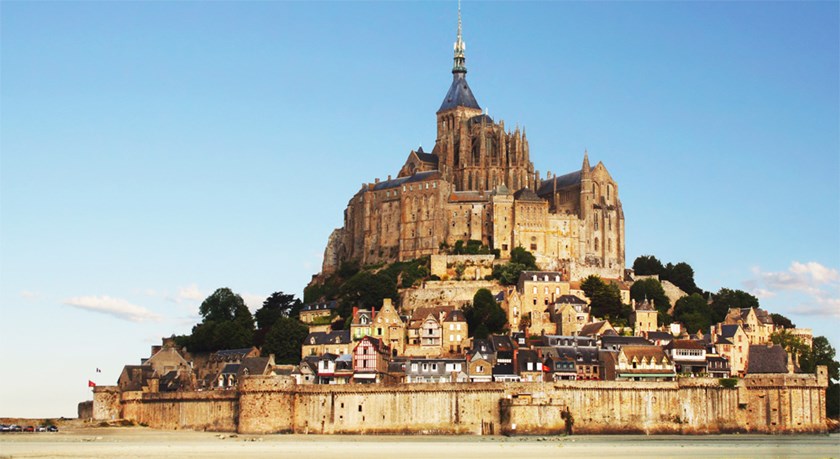ARRAS, FRANCE - The crisp wind blowing through the forest thick with maple and pine trees makes us feel like we’re in Northern Ontario when in fact we’re driving through parkland in Northern France. This is sacred ground, given to Canada by the French government in recognition of our country’s role in the battle of Vimy Ridge, a World War I fight that defined Canada as a nation, but at great cost.
Many Canadians make the pilgrimage to this tiny farming community to pay homage to those killed in the battle of April 9, 1917, in which 3,598 Canadian soldiers died and another 10,602 were wounded.
Where once the sound of gun and cannon fire filled the air, now all we hear is the gentle rustling of leaves as we make our way up a long pathway to Walter Allward’s magnificent memorial that commemorates the battle.


Left: the cliffs the soldiers climbed. Right: The town they saved is now filled with an army of tourists.
Bathed in a brilliant white light when we arrive, the monument evokes instant emotion. A chill runs down my spine as I trace my fingers over some of the thousands of names engraved in the milky-white stone. The grieving faces that dominate the monument are a sober reminder of the suffering that took place here.
As we stand in the shadow of this wonderful piece of art, my husband and I reflect on the unforgettable two-week motoring trip through Northern France that has led us here.
Equipped with road maps, a GPS and high school French, we travelled to this part of France to see some of the settings we know so well from books, movies and family stories from the two World Wars.
Just a few hours from Paris, we find lodgings in an old manor house in the tiny hamlet of Giverny, the village where Impressionist painter Claude Monet lived for 43 years.
His pink home and renowned gardens have been beautifully restored. On a June morning, the gardens are lush with poppies and roses, but we are drawn to the lily pond featured in so many of Monet’s paintings. We stand on the green bridges soaking in the familiar scenes.
In the evening we have dinner in the local Ancien Hotel Baudy where Monet and his artist friends, including Renoir and Cezanne, liked to meet. The food and the atmosphere are perfect and we both love the local dessert, apple sorbet drenched in an apple brandy known as Calvados.


Above: Some of France's most iconic landmarks are in this area.
Unlike sleepy, pretty Giverny, our next stop, Rouen, the historic capital of Normandy where Joan of Arc was burned at the stake, is a bustling city. The streets of the Old City twist and turn past churches, steeples and arches. There are hundreds of original medieval buildings and the huge gothic Notre Dame Cathedral dates from the 13th century.
Colourful, half-timbered stores and homes open their shutters right into the streets. Dozens of tiny restaurants set counters outside to sell flaky pastries and baguettes filled with meat and cheese. There are also lovely chocolate shops and stores dedicated to multi-coloured cookies known as macarons.
I am lucky to be able to celebrate my birthday with dinner at La Couronne, a restaurant/inn opened in 1345. We are charmed by its low main room ceilings and huge log fireplace. The duck and lamb are delicious, but the elaborate cheeseboard that we mistake for a sweet tray is breathtaking.
On a busy market day we arrive in enchanting Honfleur. The impossibly narrow, twisty streets of this 11th century city are packed with shoppers and merchants. Tall, colourful medieval houses, some 10-storeys high, line a harbour filled with sailboats. Samuel de Champlain journeyed from this port in 1608 and found Quebec; a plaque on the medieval town gate commemorates his historic voyage.
The World Heritage Site Mont-St-Michel, a few hours down the road from Honfleur, is the most visited site in France after Paris. A medieval village and the 800-year-old abbey sit on a granite mountain surrounded by a bay which floods with the highest tides in Europe. Signs warn us of quicksand as we park the car and enter the ramparts.
Assisted by English audio guides, we ascend the one winding street of the tiny village and climb dozens of twisting wide steps to the entrance of the abbey.
Inside, built up in layers like a pyramid, is an entire cathedral, marble cloisters, dungeons, crypts, halls and endless stairs and passageways. Everything is made of thick, heavy stone. From terraces and windows we enjoy views of the countryside and marvel at this feat of ancient engineering.
Bayeux, our base for exploring the Normandy coast, is jam-packed with British and American tourists, Allied flags and WW II souvenirs. Welcome signs on almost every lamp post and store window lend a cheerful atmosphere to the elegant, grey-stoned town, which is also home to the renowned Bayeux tapestry.
Not knowing what to expect, we are amazed to enter the tapestry’s private visitors’ centre and discover the story of William the Conqueror’s invasion of England, embroidered on 68 metres of linen. Spellbound, we study the intricate panels of the 500-year-old masterpiece for hours.
It is only a short drive from Bayeux to the brilliant Normandy coastline that overlooks the English Channel. The winding coastal road is well signed and we have no problem finding Arromanches, Ver-sur-Mer and Ste-Marie-du-Mont.
The beaches abutting these towns became landing sites for the Allies on D-Day in World War II. We know them by their code names: Omaha, Gold and Utah, where thousands of ships arrived on June 6, 1944 and tens of thousands of soldiers disembarked into the treacherous water under heavy gun fire.
Most of the towns along the coastal road have found unique ways to remember D-Day and the years of 1939-1945. More than two dozen small, cluttered, unsophisticated museums tell the stories of the battles that took place here.
We watch old black-and-white movies, look at uniforms, medals, equipment, cigarette boxes and read letters sent home from terrified young men.
In Longues sur Mer, we climb on a German artillery battery, where four guns remain in place. In Ouistreham, we visit a huge German observation tower still outfitted with its original equipment and supplies and study a freehand sketch of the coast of Europe drawn by the legendary German Gen. Erwin Rommel.
The most contemporary display is in Courseulles, the site of Juno Beach, where Canadian forces landed on D-Day. The state-of-the-art Juno Beach Centre is designed in the shape of a maple leaf.
Movies, pictures, artefacts and interactive displays give visitors a sense of the battle. Guides give tours of the beach where a bunker and part of the Atlantic Wall still stand.
Arras, near the Belgian border, is the last spot we visit. It’s another lovely town whose picturesque central square is surrounded by Flemish style buildings, reflecting Belgium’s influence on this part of France.
Next morning, we celebrate our last day in France with a breakfast of cafe au lait, croissants and raisin-filled pastries from a local boulangerie.
Best of all, we order in French.